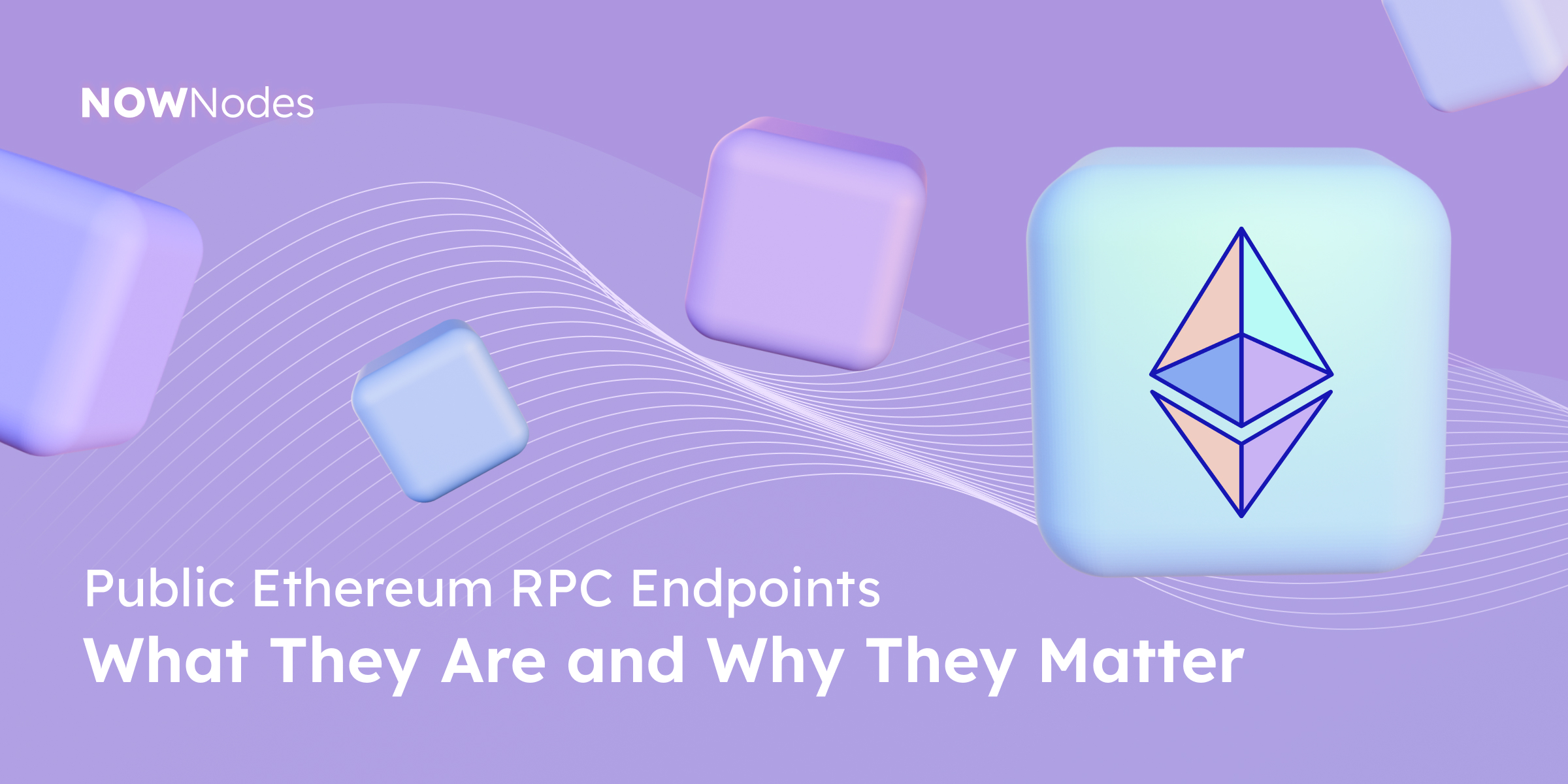If you’re building a dApp, wallet, or any blockchain-based service on Ethereum, you’ve probably encountered the term public Ethereum RPC endpoints. These endpoints are essential for interacting with the Ethereum network, yet many developers overlook their limitations and security concerns. In this article, we’ll break down what they are, how they work, and when you should (or shouldn’t) use them.
What Are Public Ethereum RPC Endpoints?
Ethereum nodes expose an API called JSON-RPC that allows applications to communicate with the blockchain. This is how wallets, explorers, and dApps query data (like balances, transactions, and block info) or send transactions.
A public Ethereum RPC endpoint is simply an RPC interface hosted by NOWNodes and made publicly accessible to anyone—often for free.
These services save developers from running their own Ethereum node, which can be expensive and resource-heavy.
How Public Ethereum RPC Endpoints Work
When you make a request to a public RPC endpoint, your application sends JSON-RPC calls like (for the methods you can use our documentation):
{
"jsonrpc": "2.0",
"method": "eth_blockNumber",
"params": [],
"id": 1
}
The RPC provider responds with data directly from the blockchain network. This makes it possible to:
- Fetch account balances (
eth_getBalance) - Read smart contract data (
eth_call) - Send transactions (
eth_sendRawTransaction)
Pros and Cons of Public Ethereum RPC Endpoints
Pros:
- Free or Low-Cost: Great for testing and small-scale projects.
- Zero Maintenance: No need to run your own node.
- Quick Setup: Just plug in the URL and start building.
Cons:
- Rate Limits: Most public endpoints limit requests per second.
- Shared Resources: Higher latency due to shared infrastructure.
- Security Risks: Exposing API keys or using untrusted endpoints can lead to exploits.
- Not Always Reliable: Downtime or throttling can break your app.
When Should You Use Public Endpoints?
Public endpoints are perfect for:
- Hackathons & Prototypes
- Learning and Testing
- Small Projects with Low Traffic
For production-level dApps, especially those handling sensitive transactions, a dedicated RPC node or private endpoint is a better choice. This ensures reliability, performance, and security.
Best Practices for Using Public RPC Endpoints
- Avoid Hardcoding Keys – Use environment variables.
- Implement Fallbacks – Have multiple RPC endpoints to reduce downtime.
- Monitor Usage – Stay within rate limits to avoid service disruption.
- Don’t Trust Random RPC URLs – Use reputable providers to prevent data tampering.
Conclusion
Public Ethereum RPC endpoints are an excellent starting point for developers who want quick access to Ethereum without running a full node. However, as your application grows, consider moving to private RPC endpoints or running your own infrastructure for better performance and security.
Looking for fast and reliable Ethereum RPC access? Check out our Public Endpoints and get started with free and premium options.



